If you’ve read or watched anything about photography, you’ve likely heard the term depth of field thrown around. But what is it, exactly? This article will help you understand the term and learn how to control depth of field to take more compelling photos.
What Is Depth of Field?
The depth of field (DoF) in photography refers to the depth of the area that is in sharp focus.
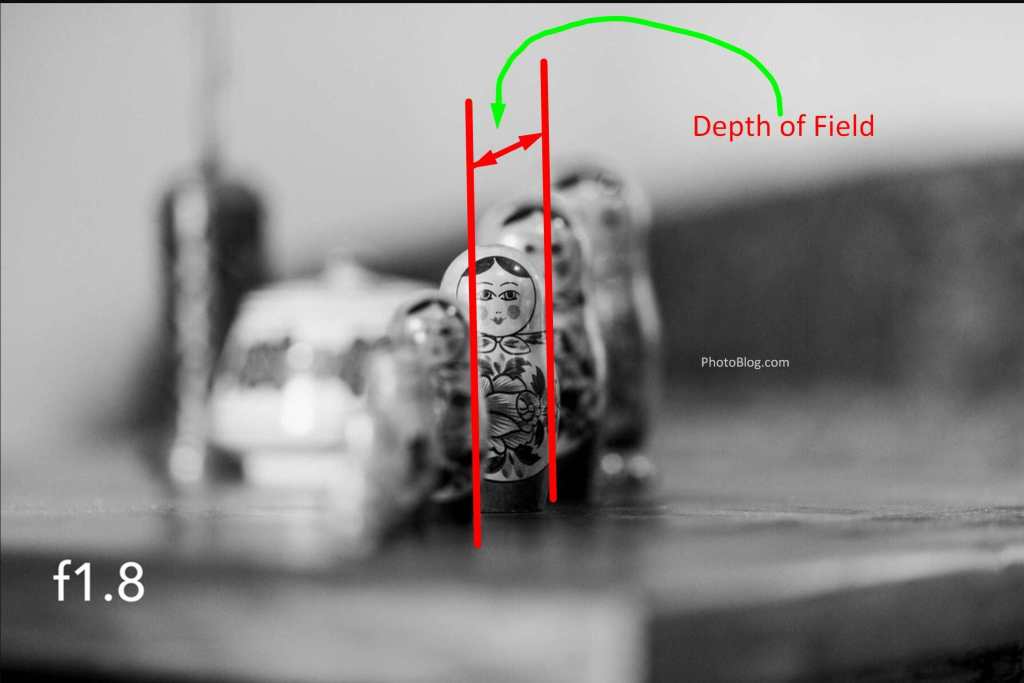
There are photos where just one part of the image is in focus and the rest is smooth and out of focus. And there are also photos where everything in the frame is nice and sharp.
The depth of field is described as shallow or deep depending on how much of the photo is in sharp focus.
When a photo has a shallow depth of field, only a small portion of the image is in focus while the rest is blurred out.
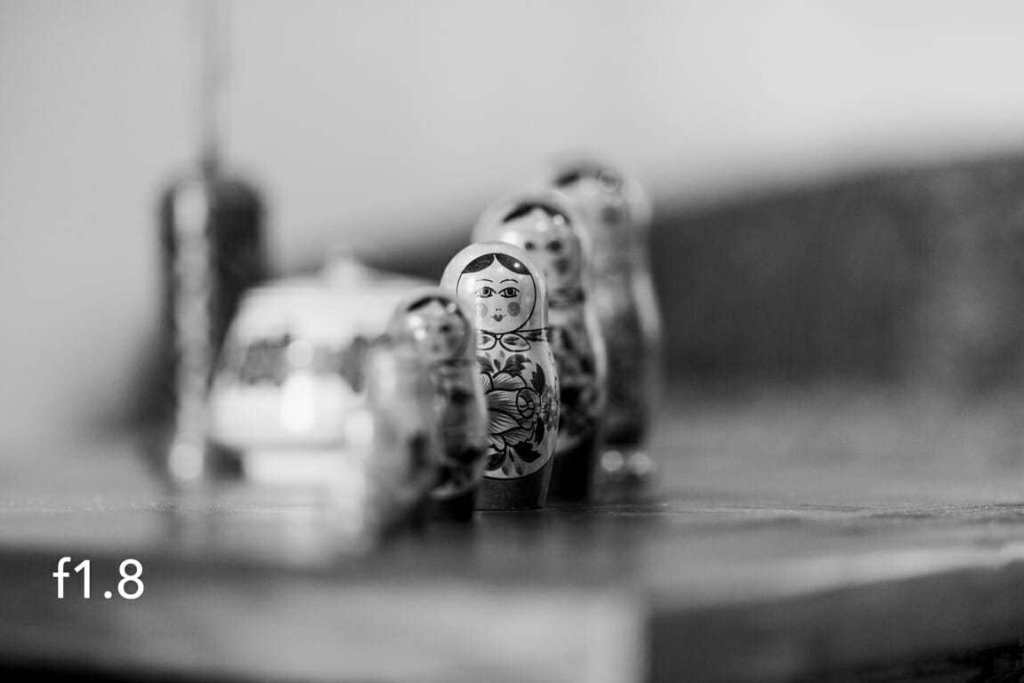
Matryoshka doll) is in focus. F/1.8 indicate the size of
A deep depth of field renders most or all of the photo in focus.

What Factors Affect Depth of Field?
There are several ways to control how much of a photo is in focus. In other words, the depth of your depth of field.
1. Aperture
One of the easiest ways to control the depth of field is to change the size of your aperture (a hole in your lens which let light through to the sensor).
When the aperture is large (small F-stop number), your depth of field will be shallow. Conversely, when you use a smaller aperture (large F-stop number), your depth of field will be deeper.
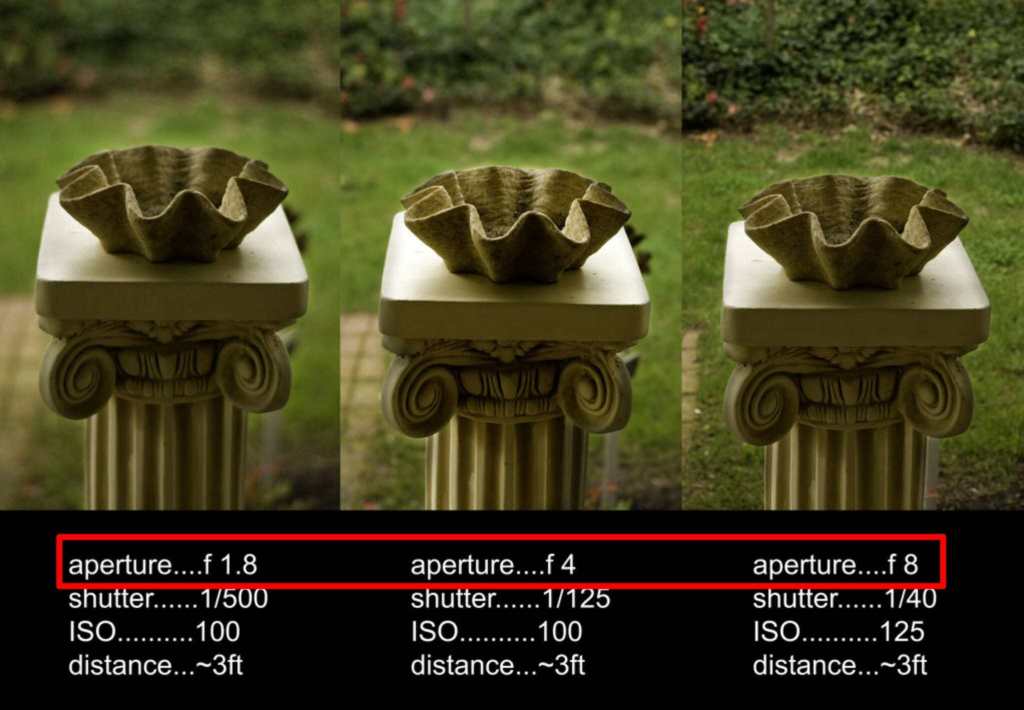
2. Distance Between Camera and the Subject
The closer you get to your subject, the shallower your depth of field.
As you can see from the example below, as you approach the subject from 5ft, 3ft, and finally 1.5ft, the DoF has gotten much shallower.
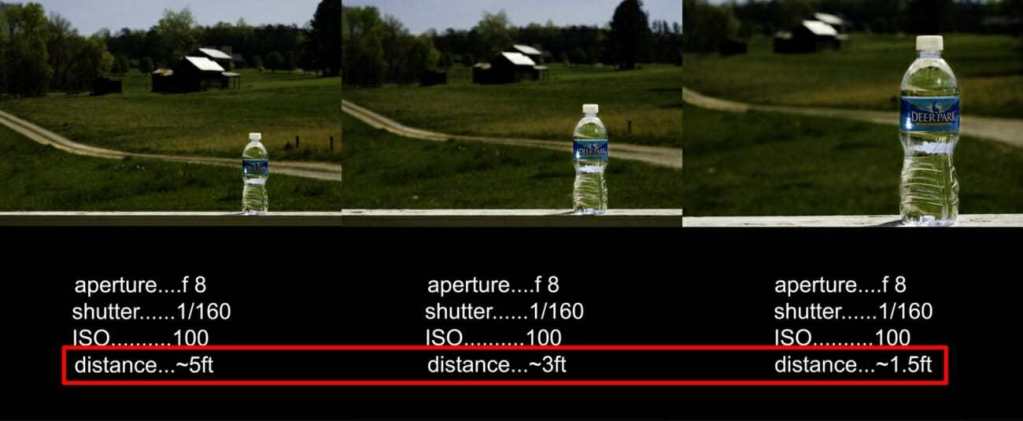
3. Focal Length of Your Lens
There is a misconception that a longer focal length (zoom lens) will yield shallower depth of field compared to a shorter focal length (wide-angle lens).
However, this is not true.
If your subject covers a similar size/portion of the frame, focal length’s effect on DoF is negligible.
However, there are practical advantages to using a zoom lens because resulting images may appear to have shallower depth of field. This is why a lot of portrait photographer’s zoom in on their subjects using a zoom lens like the 70-200mm.
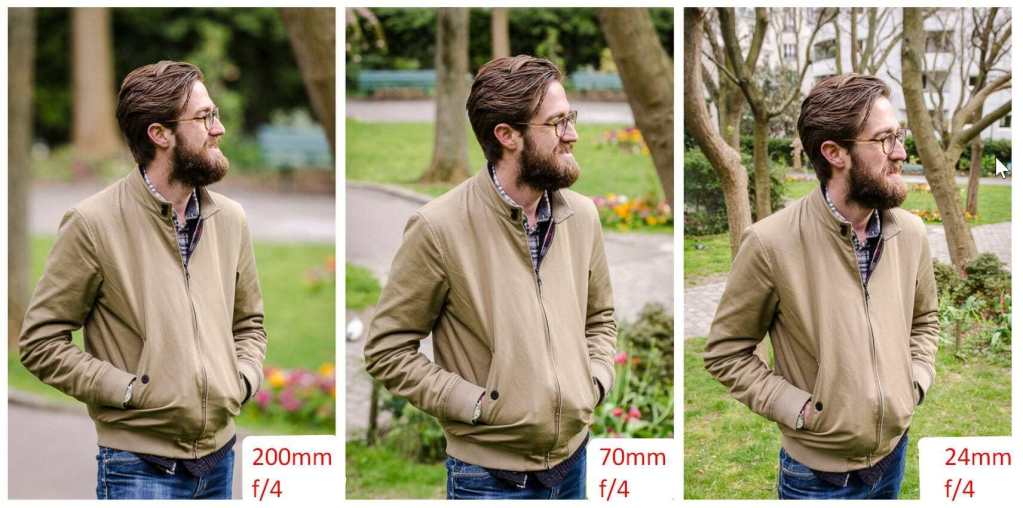
Longer focal lengths appear to produce shallower DoF because they have a narrower angle of view which magnify the background more to fill the frame. As a result, the out of focus background (blur) may appear more out of focus with a zoom lens.
4. Sensor Size of Your Camera
When shooting the same composition with the same aperture, an image taken with a full-frame camera results in a shallower depth of field than an image taken with a crop sensor camera.

The reason is simple, to fill the frame, large sensor cameras need to either get close to the subject or zoom in (larger focal length). Both of these factors gives you a shallower depth of field.
How Do I Calculate the Depth of Field?
There is a mathematical formula that allows you to figure out the size of your plane of focus—how much of your photo will be in sharp focus. The calculation involves, camera model (sensor size), focal length, aperture, and subject distance.
Luckily, you don’t need to memorize anything or calculate your depth of field from scratch. Tools like this one from DOFMasters let you enter in your camera model and focal length to determine how much of your photo will be in focus at a given aperture.
Is There a Way to Preview the Depth of Field Before Taking an Image?
DSLR cameras have a depth of field preview button which allows you to preview the DoF through your viewfinder or LCD. The DoF preview button is located on your camera at the base of your lens.

When you press and hold it, the lens is stopped down to your chosen aperture so you can see which parts of your photo will be in focus through the viewfinder or in live view.
Your preview through the optical viewfinder will look darker than your photo will actually turn out because the smaller aperture will limit light.
Note: If you have a mirrorless camera with an electronic viewfinder, you don’t need a DoF preview button; you’ll be able to see an accurate preview on the LCD screen.
How to Get a Shallow Depth of Field?
There are several actions you can take to achieve a shallow plane of focus:
- Open up your aperture (use a small F-stop like f/1.8, f/2)
- Use a longer focal length.
- Place your camera closer to the subject.
- Move
your subject further from the background.
When to Use a Shallow DoF?
Shallow depth of field is a good choice when you need to emphasize, add depth to your scene, or isolate your subject.
Doing so would minimize background/foreground distractions by blurring them out. A shallow depth of field is also a creative tool for bokeh or selective focus which is frequently used in portrait, macro, and close-up wildlife photography.

When Not to Use a Shallow DoF
It might be tempting to shoot everything with a shallow depth of field, but there are times when it isn’t a great choice. For example, if your subject’s surroundings provide context that is important, a shallow DoF might take away from the photo’s story.
You’ll also want to be careful about going too far with shallow DoF. For example, it’s important that faces–and eyes in particular–be sharp when you’re photographing people and animals. If your plane of focus is too narrow, particularly when shooting groups or moving subjects, faces will be out of focus.
Landscape photography is another area where a shallow DoF keeps the viewer from seeing everything that’s important to a scene.

Photo by Rainier Ridao
Example Photos of Shallow Depth of Field


How to get a deeper Depth of Field?
- Use a smaller aperture (for example, f11, f22).
- Increase your distance from the subject.
- Use a shorter focal length.
- Calculate and focus on the hyperfocal distance.
When to Use a Deeper Depth of Field
It’s also useful for capturing fast-moving subjects, such as athletes or children, that could potentially move out of the focus plane. The larger your plane of focus, the less likely it is that your subject will move to a spot where they’re out of focus.

When Not to Use a Deeper Depth of Field
Avoid using a deep DoF when your subject’s surroundings are a distraction. If you’re taking a portrait in a cluttered space, for example, a shallower DoF will blur out all the items that might keep a viewer from focusing on your intended subject.

Photo by Chris Murray
Example Photos of Deeper Depth of Field
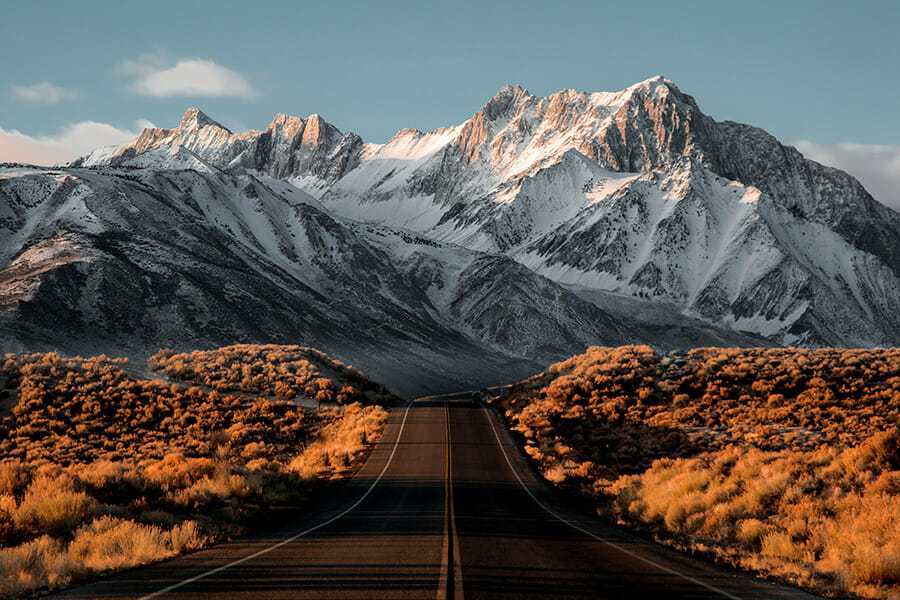

Hyperfocal Distance
Hyperfocal distance is a particular point that you can focus on in a scene to get the most sharpness from front to back. In order to maximize DoF, it’s useful to know the hyperfocal distance of your lens’s focal length at a given aperture.
For example, if you’re trying to photograph a tree in front of a range of mountains, focusing on the tree might throw your background out of focus. And focusing on the mountains could make the tree go out of focus. Instead, focusing at the hyperfocal distance will ensure that both the tree and the mountains are acceptably sharp.
Search for a hyperfocal distance chart or app to determine where you should focus to achieve maximum DoF.

Over to you
Understanding how to control the depth of field increases your creative possibilities. Try using these methods in your photos to control DoF to fit your creative needs.
Please share your questions, sample photos, and feedback in the comments section below.
Download FREE Photography Lighting Cheat Sheet
Subscribe and get a free downloadable photography lighting cheat sheet
